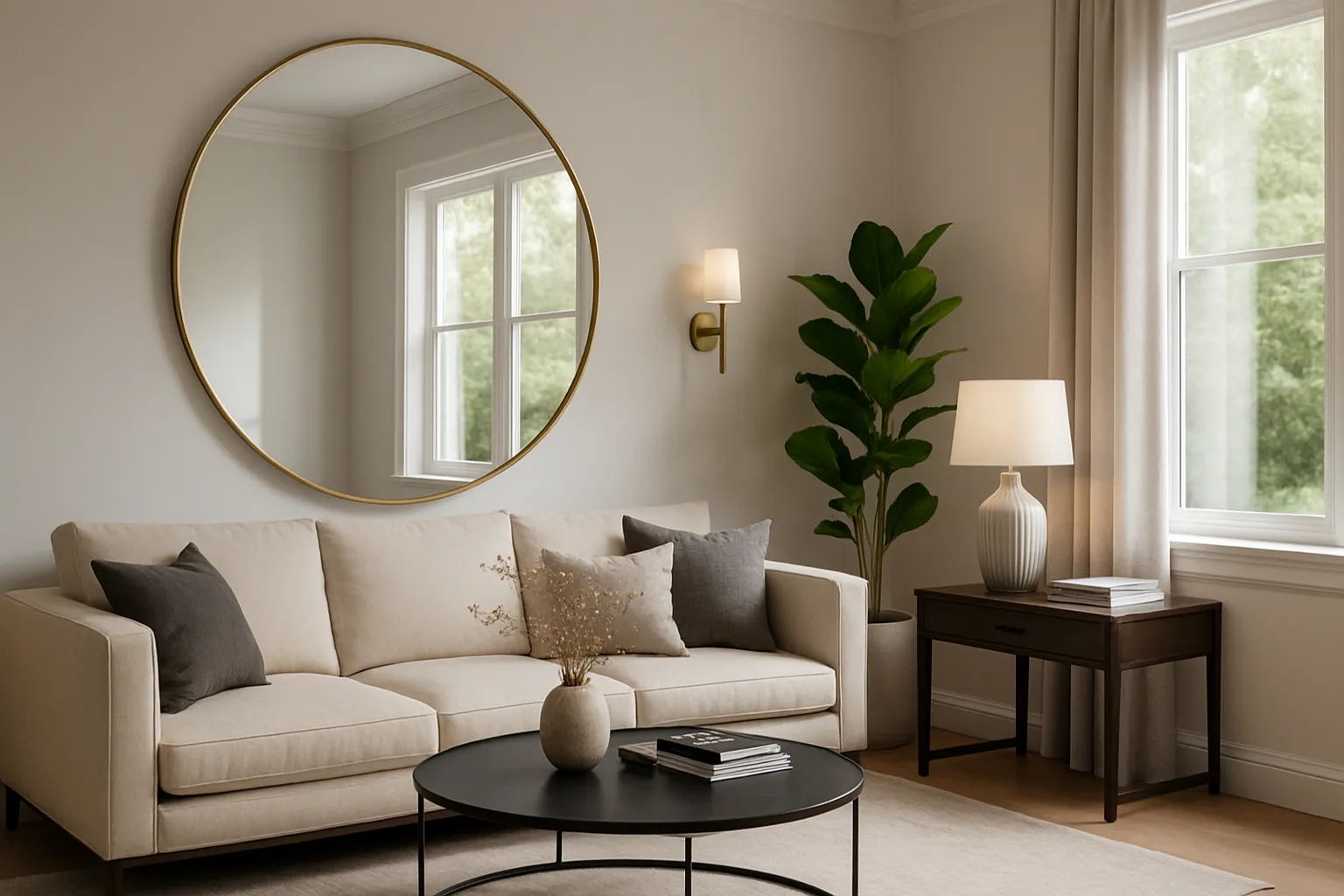Mirrors are one of the most powerful tools in interior design. They can make small spaces feel larger, dark corners feel brighter, and plain walls feel more interesting. Whether your goal is to reflect natural light, create depth, or enhance the overall aesthetic of a room, mirrors are both functional and stylish. In this guide, you’ll learn how to use mirrors in your home decor to add light, space, and elegance to any room.
Understand the Impact of Mirrors
Mirrors aren’t just for checking your reflection—they’re visual amplifiers. They bounce light, expand views, and introduce a sense of openness to tight or enclosed areas.
Key Benefits:
- Brighten up dark rooms by reflecting natural or artificial light.
- Create the illusion of more space in small or narrow areas.
- Enhance focal points by drawing attention to architectural features or decor.
- Add style and texture with decorative frames and shapes.
Using mirrors intentionally can transform the energy of a space without major renovations.
Place Mirrors Opposite Light Sources
To maximize brightness, position mirrors across from windows or near light fixtures. This helps them reflect light back into the room, making it feel more spacious and vibrant.
Light-Reflecting Tips:
- Hang a large mirror directly across from a window to double the daylight effect.
- In darker rooms, place a mirror near a lamp or wall sconce.
- Use mirrored furniture or surfaces (like console tables or trays) to bounce light subtly.
Even a small mirror can significantly improve the lighting in a shadowy room.
Use Oversized Mirrors for Dramatic Effect
Large mirrors create an instant wow factor. They also visually extend the room, which is ideal for apartments or small spaces.
Oversized Mirror Ideas:
- Lean a full-length mirror against the wall in a bedroom, hallway, or entry.
- Hang a large rectangular mirror horizontally over a sofa or dining table.
- Place a tall mirror behind a plant or floor lamp to create dimension.
The bigger the mirror, the more expansive the room will feel—just make sure the proportions suit your space.
Create Mirror Galleries or Wall Collages
You don’t always need one large mirror—a group of smaller ones can make a big statement and add character.
Gallery Wall Tips:
- Use mirrors in different shapes but with cohesive frames.
- Arrange them symmetrically or in a salon-style collage.
- Combine mirrors with art or photographs for visual contrast.
This is a great way to add personality to stairwells, entryways, or long corridors.
Choose Mirror Shapes That Complement the Room
The shape of a mirror can influence the style and flow of a space. Use this to your advantage to either soften a space or emphasize structure.
Shape Selection:
- Round mirrors create softness and balance angular furniture.
- Arched or oval mirrors add a classic or romantic touch.
- Rectangular or square mirrors offer a clean, modern look.
- Abstract or geometric mirrors work well in eclectic or contemporary homes.
Match mirror shapes with your design style and existing lines in the space.
Incorporate Mirrors into Functional Decor
Mirrors can also serve a practical role while still enhancing your aesthetic.
Functional Mirror Uses:
- Use mirrored wardrobes or closet doors in small bedrooms.
- Install mirrored backsplashes in kitchens or bars to reflect light and activity.
- Place a mirror behind a console table in the entry for last-minute checks.
These placements combine beauty and practicality seamlessly.
Use Mirrors to Expand Narrow Spaces
In hallways, staircases, or tight corners, mirrors visually expand the area and create movement.
Narrow Space Tips:
- Hang a vertical mirror at the end of a hallway to create depth.
- Use a series of slim, tall mirrors along one wall to elongate the space.
- Pair with lighting to make corridors feel open and less confined.
This trick makes your home feel larger and more connected.
Style Mirror Frames to Match Your Decor
The frame of a mirror can completely change its vibe. It’s not just a functional detail—it’s a design statement.
Frame Style Ideas:
- Wooden frames for warmth and rustic or Scandinavian styles.
- Metal frames (brass, matte black) for modern or industrial interiors.
- Ornate or vintage frames for elegance and a touch of history.
- Frameless mirrors for a sleek, minimal look.
Choose frames that harmonize with your furniture, lighting, and finishes.
Avoid Common Mirror Placement Mistakes
While mirrors are versatile, thoughtful placement is key. The wrong reflection can have the opposite effect of what you want.
What to Avoid:
- Don’t place mirrors facing clutter or unattractive views.
- Avoid placing them too high—eye level is best.
- Don’t overdo it—too many mirrors can feel chaotic rather than elegant.
Always consider what will be reflected and how that contributes to the mood of the space.
Final Thoughts: Reflect Beauty, Light, and Space
Mirrors are more than decorative—they’re design tools that can reshape a room. Whether you want to brighten a dark corner, open up a small space, or add a little glamor, the right mirror in the right spot can elevate your entire home.
Think of mirrors as light and space enhancers. With thoughtful placement, style coordination, and a clear purpose, they’ll help you create a home that feels brighter, more open, and beautifully curated.
